Saree from India is not just a garment, but a whole history embodied in the fabric. Its roots go back centuries, to ancient India, where cloth served not only as clothing, but also as a symbol of status, wealth and spirituality. This attire epitomizes femininity, beauty and elegance. Despite the changes in fashion, the sari remains a constant part of Indian culture, harmoniously combining tradition and modern trends.
Today, the sari inspires designers all over the world, appearing not only on the streets of India, but also on the world’s catwalks. Let’s go on a journey through the amazing world of the sari and learn about its varieties and significance.
Types of silk sarees and their features
Silk sarees have always been considered the epitome of luxury. Their softness, noble luster and exquisite draping make them the perfect choice for festive occasions. Depending on the region, silk sarees have different characteristics.
Muga silk

Muga is a rare and durable silk with a natural golden hue, produced only in the Indian state of Assam. Its luster does not fade for decades, and its cost is many times higher than ordinary silk. Earlier it was available only to the rajas and nobility. It is believed that over the years its shine only increases, making products made of muga a real luxury.
Tussar silk
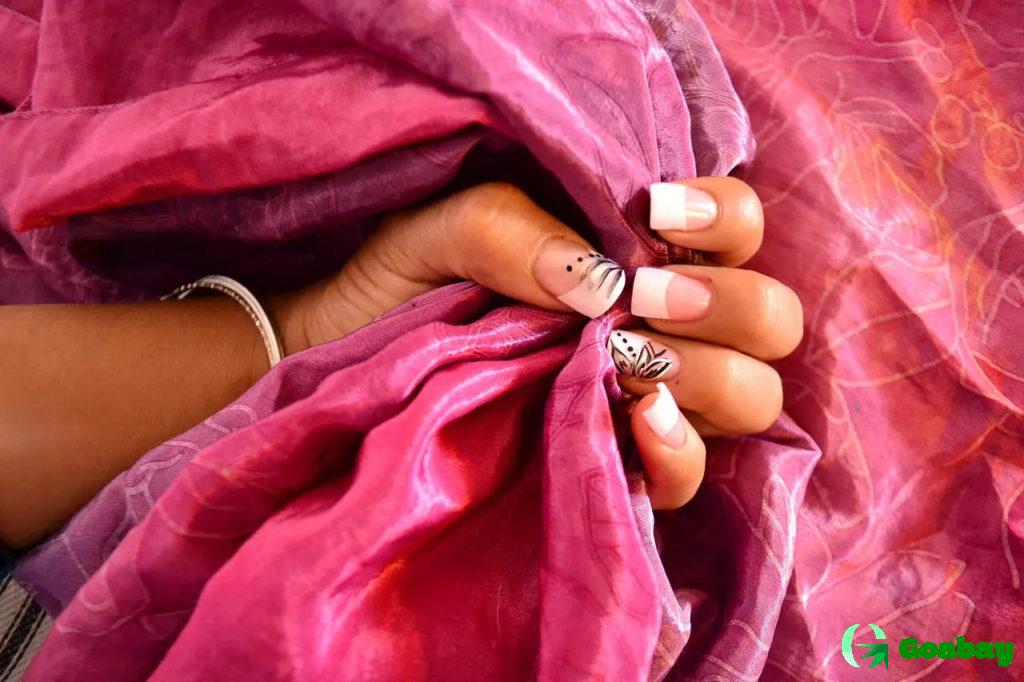
Tussar is a strong and lightweight silk extracted from the cocoons of wild silkworms of Antheraea mylitta and other species. It has a characteristic coarse texture and a natural brownish color due to tannins from the plants on which the silkworms feed. Attempts to domesticate them have failed, so tussar remains a wild silk.
This silk absorbs dyes well, allowing the creation of brightly colored fabrics. Due to its durability, it is used not only for clothing, but also for interior fabrics, drapes and furniture coverings. In India, tussar is produced in Manipur, Himachal Pradesh, Assam and other states. China is also a major supplier, especially of oak tussar, which is derived from the silkworm Antheraea pernyi.
Kanchipuram saris
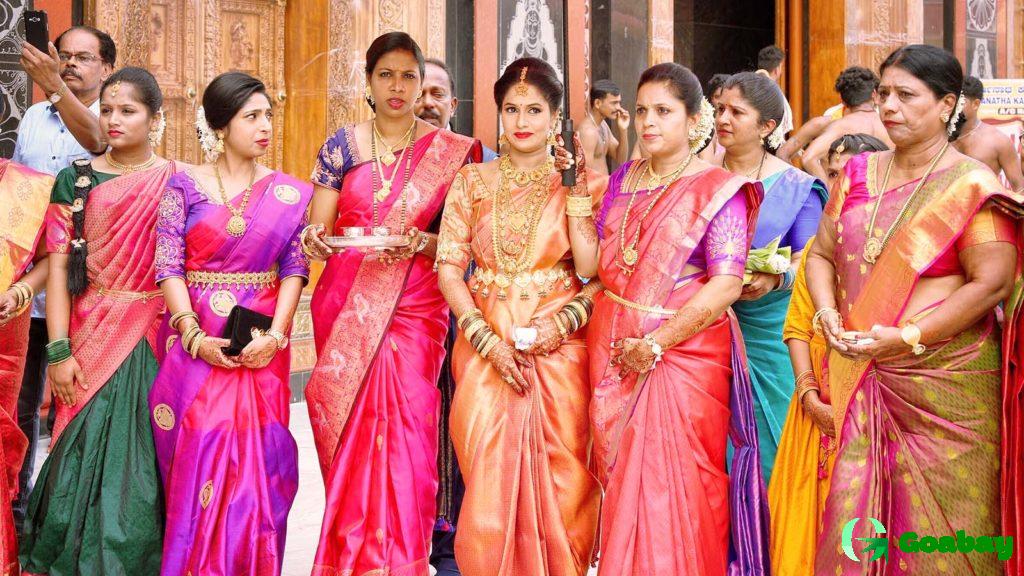
Manufactured in South India, in the city of Kanchipuram, known for its ancient weaving traditions. These saris are characterized by a dense fabric that makes them durable. Luxurious patterns with traditional motifs of temple architecture, flowers, birds and mythological themes. Gold and silver thread embroidery gives them solemnity and status. The use of pure silk and gilded threads makes Kanchipuram sarees ideal for weddings and other festive occasions.
Bangalore silk saris

These saris are made in Bangalore, one of the main centers of silk production in India. They are lightweight and transparent, making them comfortable to wear in hot climates. Simple but exquisite patterns, often in pastel and delicate colors. The use of premium quality natural silk makes them comfortable and durable.
Cotton sarees: comfort and simplicity
Traditional cotton sarees that are characterized by their lightness and elegance. They are popular among women who prefer comfort and style in their daily life.
Kota sari
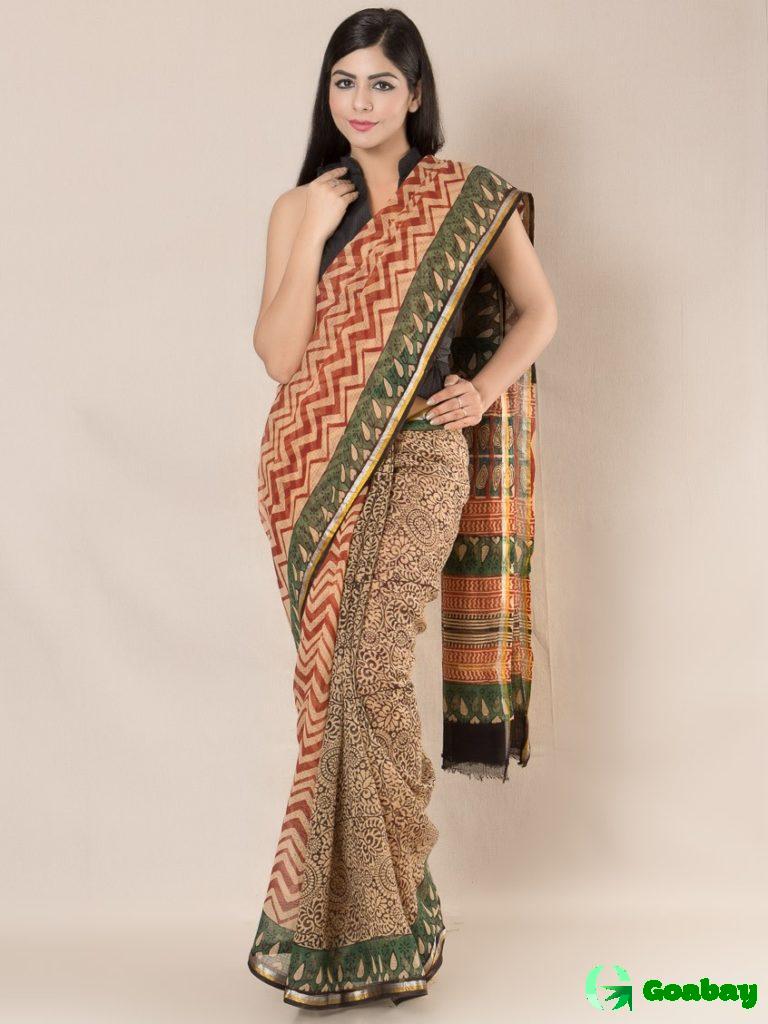
Kota saris (or “Kota Doria”) are native to the state of Rajasthan. These saris are woven from fine threads of cotton and sometimes silk, creating a translucent texture. They are characterized by their lightness and durability, as well as the unique pattern produced by the square mesh weave method.
Chandali sari
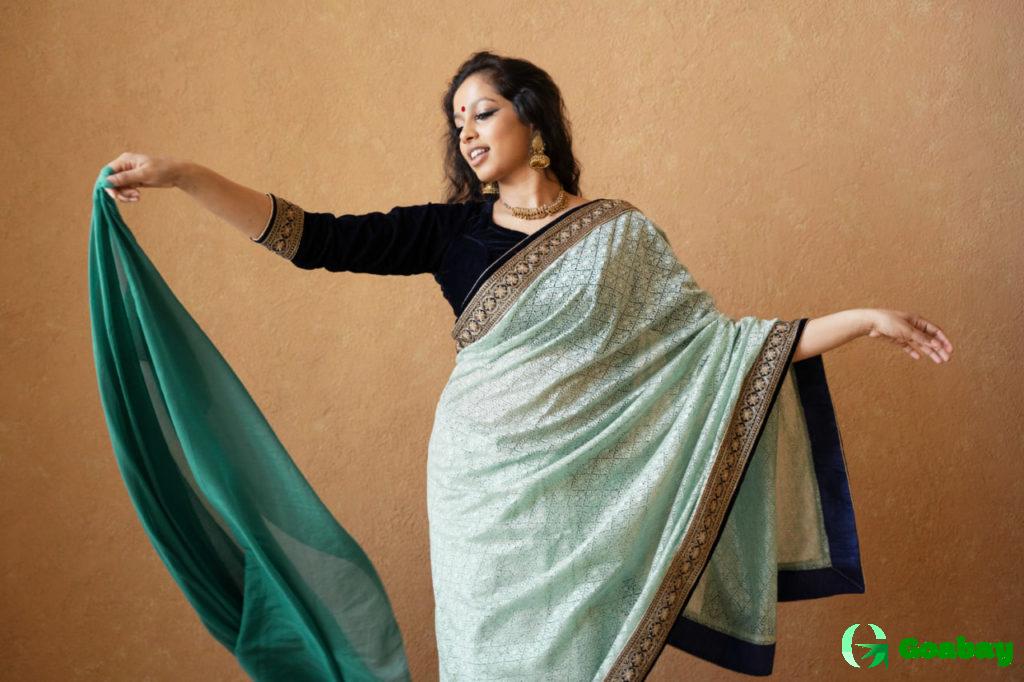
Chandali saris are bright and durable cotton saris known for their geometric designs and contrasting color combinations. They are often embellished with hand embroidery and traditional Indian motifs.
Dhakai
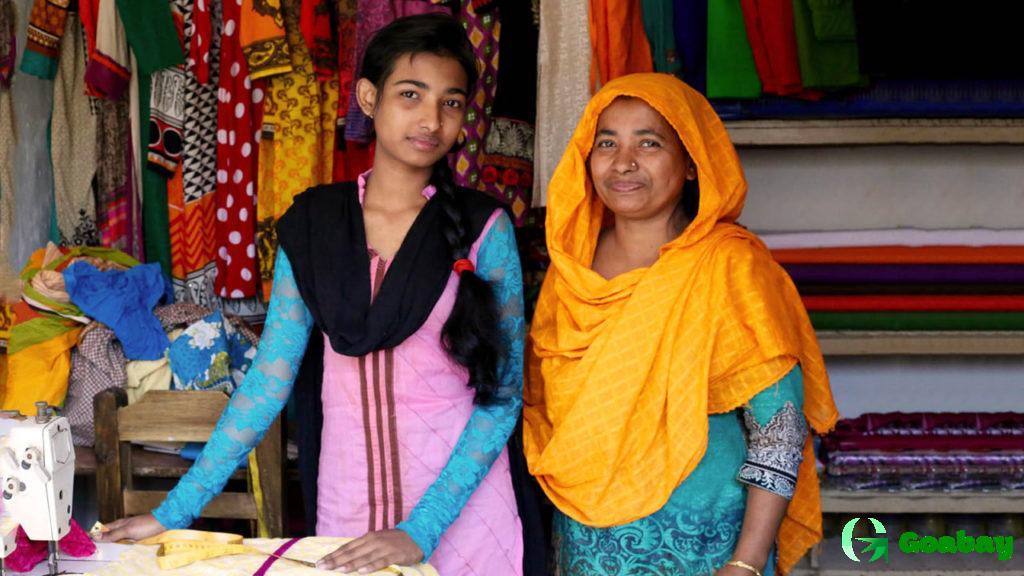
Dhakai (or “Dhaka muslin”) are exquisite cotton saris originating from Bangladesh. They are famous for their incredible fineness and exquisite patterns, which are created using the jacquard weaving technique. They are perfect for warm climates as they allow the skin to breathe. These saris are so lightweight that they used to be called “airy”. The designs often include floral and vegetal motifs, which are handmade.
Banarsi sari: royal luxury

Banarsi saris are some of the most luxurious saris of India, originating from Varanasi. They are famous for their intricate embroidery with gold and silver threads, detailed patterns and rich history. A Banarsi sari is a work of art that combines craftsmanship, tradition and elegance.
Banarsi saris are made of natural silk, cotton or organza. Embroidery is done by hand in zardozi technique using metallic threads. The patterns are dominated by floral, geometric and temple motifs.
Banarsi saris are traditionally worn for weddings, festivals and important ceremonies. They symbolize wealth and are handed down from generation to generation.
Embroidered saree: art and craftsmanship
Various embroidery techniques give each fabric a unique look, making it more than just a garment. Embroidered saris can be both luxurious, designed for formal occasions, and casual, made in more subdued techniques.
Kadamba and kachha
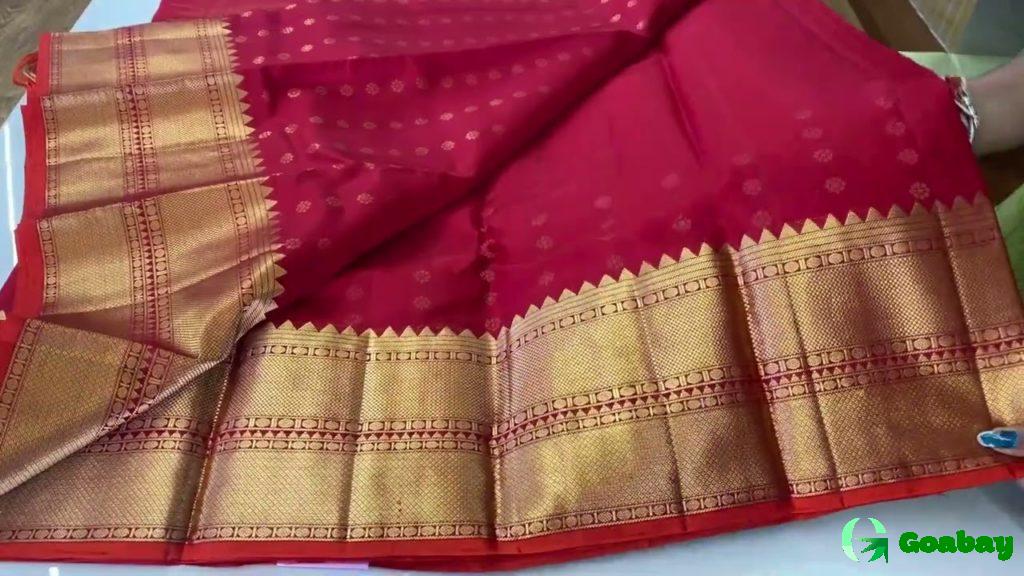
These types of embroidery are characterized by the way the stitches are placed and the density of the pattern. Kadamba is characterized by small, tightly spaced stitches that create crisp and detailed patterns. Kachha, on the other hand, uses a looser technique that makes the embroidery look airy and light. Both styles are widely used in the creation of traditional saris, especially in the Gujarat and Rajasthan regions.
Bandhani

Bandhani is not so much embroidery as it is a fabric dyeing technique in which the fabric is tied into knots before being dyed. This method creates intricate patterns of dots, circles or shaped motifs. Bandhani saris are popular in the states of Gujarat and Rajasthan and are usually made in bright colors such as red, yellow, blue and green.
Zardozi sari
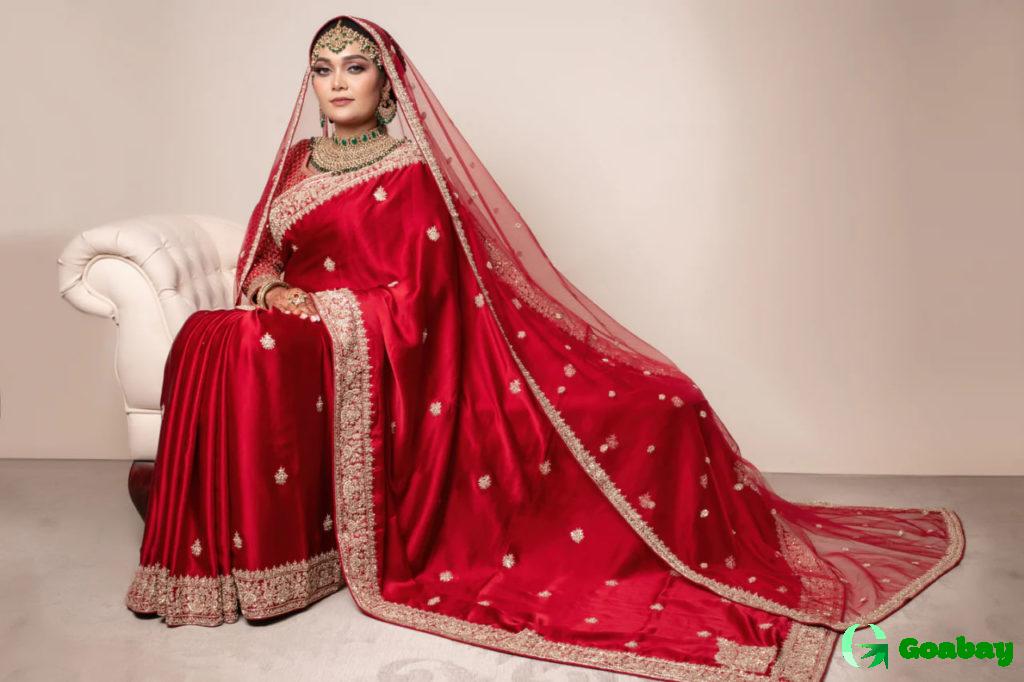
Zardozi is one of the most luxurious embroidery techniques that utilizes gold and silver threads, beads, stones and metal elements. This type of embroidery has historically been used to create outfits for royalty and nobility. Saris with zardozi embroidery are usually worn for weddings and other festive occasions, as they look incredibly rich and majestic. These saris are particularly popular in Uttar Pradesh, especially in the cities of Lucknow and Varanasi.
Modern saris: tradition and innovation
Modern designers are rethinking saris, combining traditional elements with new technologies and materials. The collections include shorter models, unusual color combinations and bold prints. Modern saris are worn with different accessories, creating stylish and original images.
The sari remains not just a garment, but a symbol of cultural heritage and a source of inspiration. It can be seen not only in India, but also in fashion shows, movies and everyday life. This versatile garment emphasizes femininity and elegance and continues to win the hearts of fashionistas around the world.
Where to buy a sari: your guide
If you decide to buy this beautiful creation of Indian culture, you have several options: you can buy in India in stores, markets or order online on our website.
